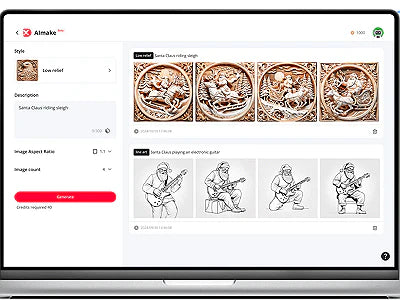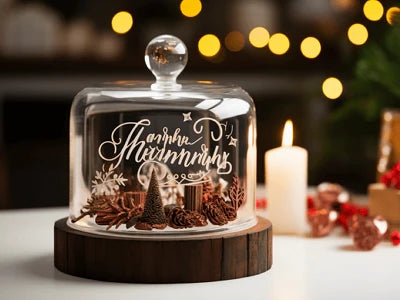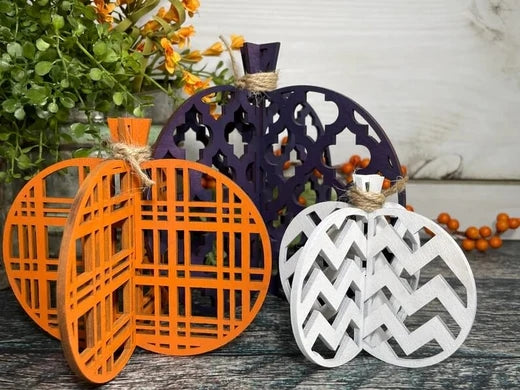T-shirts are one of the most versatile and popular garments in the world. They can express your personality, promote your brand, or commemorate an event. But have you ever wondered how printing and designing are done in t-shirts? How do you print your own designs on t-shirts? What are the best methods for printing t-shirts that suit your needs and budget?
In this generation, we now have many options for printing on t-shirts, thanks to modern technology. However, every printing method has its own advantages and disadvantages.
In this article, we will explore 12 different types of t-shirt printing methods, from the most common ones to the most creative ones. We will also show you how to print t-shirts at home using one of these methods. Let’s get started!
In This Article
- Screen Printing
- Plastisol Transfers
- Heat Press Printing
- Vinyl Cutting
- Dye Sublimation
- DTG- Direct To Garment Technique
- DTF- Direct-to-Film Printing Technique
- Discharge Printing
- Belt Printing
- Resist Dyeing
- Embroidery
- Airbrushing
- How to Print T-shirts at Home?
1. Screen Printing
Screen Printing, also known as silk screen printing, is a traditional method that produces high-quality and long-lasting prints. It involves creating a stencil of your design and placing it on a mesh screen. The screen must be prepared beforehand to ensure that only the areas of your design are open and the rest are blocked. This way, the ink will only go through the stencil and onto the t-shirt.
To print your design, you need to cover the screen with ink and press it down with a squeegee to spread it evenly over the stencil. The ink will transfer to the t-shirt through the open areas of the screen, creating a clear and accurate print. You can then remove the screen and let the t-shirt dry. Screen printing can produce vibrant and durable prints that can withstand multiple washes.
2. Plastisol Transfers
Plastisol transfers, also known as indirect screen printing, are a convenient and cost-effective t shirt printing method. They produce high-quality prints that have a soft and smooth feel on the t-shirt. The method involves screen printing your design on a special paper and then transferring it to the t-shirt using heat and pressure.
This way, you can print your design in advance and apply it to the t-shirt whenever you need it. This is ideal for small or custom orders that require quick turnaround times. The prints are also very durable and can withstand multiple washes. Plastisol transfers offer the same quality and versatility as screen printing, but with less hassle and waste.
3. Heat Press Printing
Heat press printing is a simple and fast t shirt printing method for small batches of t-shirts. It can handle any complex design with ease. The method involves printing your design on a vinyl or paper transfer and then applying it to the t-shirt using a heat press machine.
The heat and pressure will transfer the design from the paper to the fabric, creating a crisp and clear print. You just need to peel off the paper and trim any excess dye after the process is done. It is a straightforward and fun technique to try. You can also use it to decorate other items like mugs or plates with your designs.
4. Vinyl Cutting
Vinyl cutting is a printing method that involves cutting out your design from a vinyl sheet using a computer-aided design (CAD) software and a vinyl cutter. You can choose from different colors of vinyl to create vibrant and eye-catching prints. After cutting out your design, you need to use a heat press machine to apply it to the t-shirt.

5. Dye Sublimation
Dye Sublimation is a t shirt printing method that works best for light fabrics. It involves printing your design on a special paper using a special type of liquid dye. The dye will turn into gas when exposed to heat and pressure, and then penetrate the fabric of the t-shirt.
This means that you are not just printing on the surface of the fabric, but actually changing its color and texture. This results in a smooth and vivid print that you can barely feel with your hands. Dye sublimation can create complex and colorful designs that cover the entire t-shirt, but it is not compatible with cotton fabrics.
6. DTG- Direct To Garment Technique
DTG or Direct To Garment Technique is a t shirt printing method that uses an inkjet printer to print your design directly onto the t-shirt. It is similar to how you print a document or a photo on paper, but with special inks that can adhere to the fabric. DTG printing can produce high-quality and detailed prints that have many colors and shades. It is ideal for complex designs or photographic images that require a lot of precision and accuracy.
DTG printing does not require any setup or preparation, so it is very fast and convenient. You can print one t-shirt at a time, making it perfect for small or custom orders. However, DTG printing can also be expensive and slow for large orders, as it consumes a lot of ink and time. It also requires pre-treatment and post-treatment of the t-shirts to ensure the quality and durability of the prints. DTG printing works best on cotton or cotton-blend fabrics, but not on synthetic fabrics.
7. DTF- Direct-to-Film Printing Technique
DTF or Direct-to-Film Printing is a printing method that uses an inkjet printer to print your design on a film instead of directly onto the t-shirt. The film is then transferred to the t-shirt using a heat press machine. The film will peel off automatically, leaving behind a clear and smooth print. DTF printing can produce high-quality and detailed prints that have many colors and shades. It is ideal for complex designs or photographic images that require a lot of precision and accuracy.
DTF printing is faster and cheaper than DTG printing, as it uses less ink and time. You can also print multiple designs on one film, making it more efficient and versatile. However, DTF printing also requires more equipment and materials, such as the film, the powder, and the heat press machine. It also requires pre-treatment and post-treatment of the t-shirts to ensure the quality and durability of the prints. DTF printing works on most fabrics, including cotton, polyester, and blends.
8. Discharge Printing
Discharge printing is a printing method that uses discharge inks to remove the dye from the fabric instead of adding a color on top of it, creating a negative imprint on the fabric’s surface. Discharge printing is different from other techniques that use positive inks to cover the fabric.
The method requires a natural fabric, such as cotton, that can be bleached by the discharge inks. The result is a soft and natural print that has a retro and unique look. The best fabric for this method is a 100% cotton t-shirt. This printing gives a stylish vintage effect.
9. Belt Printing
Belt Printing is a printing method that allows you to print your design on the entire t-shirt, including the front and back sides. It uses a belt screen printing machine that can print on a continuous roll of fabric and then cut out the t-shirts from it. Belt Printing can create stunning and seamless prints that cover the whole t-shirt, but it is also very expensive and wasteful. This method is not very common because of the high cost of the equipment and the fabric.
10. Resist Dyeing
Resist Dyeing is one of the oldest and most artistic T-shirt printing techniques. It involves applying a substance that prevents dye from penetrating the fabric, creating patterns or designs. In this method, the fabric can be folded, twisted, or tied in different ways and then dipped into the dye solution. This is the mechanical approach that creates effects like tie-dye or batik.
Another way to do resist dyeing is to use chemical agents that react with different types of dyes. This is the chemical approach that creates effects like ikat or shibori. Resist dyeing can create unique and colorful prints that have a handmade and natural feel.
11. Embroidery
Embroidery is a T shirt printing method that involves stitching your design onto the t-shirt using a needle and thread or an embroidery machine. It is perfect for adding logos, names, or monograms to your t-shirts, but it can also create complex and colorful designs.
Embroidery adds texture and weight to your t-shirts, making them look more premium and durable. However, embroidery can also be costly and slow for large orders, as it requires a lot of skill and time. It also may not be comfortable for some people, as the stitches can irritate the skin.
12. Airbrushing
Airbrushing is a t shirt printing method that involves spraying your design onto the t-shirt using an airbrush gun and paint. It is an artistic and creative technique that can create unique and colorful prints, but it can also be messy and unpredictable.
Airbrushing requires a lot of skill and practice to master, as you need to control the pressure and distance of the spray. It also requires a lot of equipment and materials, such as the airbrush gun, the paint, and the stencil. Airbrushing can produce stunning and original prints that have a graffiti-like style, but it may not be very durable or washable.
How to Print T-shirts at Home?
Have you ever wondered make your one-of-kind t shirts? What do you need to diy t shirt printing at home? If so, you may want to try the vinyl cutting method. It's one of the best and easiest ways to print t-shirts at home.
This t shirt printing method involves cutting out shapes and designs from a special vinyl material and then applying them to the fabric with a heat press or an iron. Vinyl cutting is a great option for creating custom designs, logos, slogans, and graphics on your t-shirts. It is also relatively easy and affordable to do, as you only need a few tools and materials. In this section, we will show you how to print t-shirts at home using the vinyl cutting method in a few simple steps.
Materials
To print t-shirts at home using the vinyl cutting method, you will need the following tools and materials:
- A vinyl cutting machine. We recommend the xTool S1, which is a desktop hybrid laser and blade cutting machine that can cut and engrave over 500+ materials. It has a powerful 10W laser and a precise blade head that can cut vinyl without burning or discoloring it.
- A heat press or an iron. You will need this to transfer the vinyl designs to your t-shirts. A heat press is more professional and consistent, but an iron can also work if you apply enough pressure and heat.
- Vinyl sheets. You can choose from different types and colors of vinyl, such as adhesive vinyl, heat transfer vinyl, glitter vinyl, etc. Make sure you buy the right kind of vinyl for your project and your machine.
- T-shirts. You can use any plain cotton or polyester t-shirts for this method. Avoid fabrics that are too thin or stretchy, as they may not adhere well to the vinyl.
- A computer and a software. You will need a computer to create and edit your designs, and a software to send them to your vinyl cutting machine. The xTool M1 comes with its own software called xTool Creative Space, which has 500+ elements, 30+ fonts, common parameter settings, various editing functions, and constantly updated step-by-step project files. You can also use other software such as Inkscape or Adobe Illustrator if you prefer.
Steps
Here are the steps to print t-shirts at home using the vinyl cutting method:
- Create your design on your computer using the software of your choice. You can use any images, text, or graphics you want, as long as they fit within the working area of your machine (385 x 300 mm for the xTool M1). Make sure you mirror your design if you are using heat transfer vinyl, as it will be reversed when you apply it to your t-shirt.
- Load your vinyl sheet into your vinyl cutting machine. Make sure you align it properly and secure it with the clamps or rollers. Choose the blade head for cutting vinyl, as the laser head may damage or melt it. Adjust the blade depth and pressure according to the thickness and type of your vinyl.
- Send your design to your vinyl cutting machine and start cutting. You can use the 16MP high resolution camera inside the xTool M1 to preview your design on the material and adjust its position if needed. You can also use the auto-focus feature to set the optimal distance between the blade and the material.
- Once the cutting is done, remove the vinyl sheet from the machine and use the weeding tool to peel off the unwanted parts of the vinyl, leaving only your design on the backing paper.
- Preheat your heat press or iron and place your t-shirt on a flat surface. Position your vinyl design on your t-shirt where you want it to be and cover it with a thin cloth or parchment paper.
- Press your heat press or iron firmly on top of your design for about 15 seconds, or according to the manufacturer’s instructions. Make sure to apply even pressure and heat across the entire design.
- Peel off the backing paper from your design while it is still warm. Be careful not to burn yourself or damage your design.
- Enjoy your custom-made t-shirt!

Vinyl cutting is a fun and easy way to print t-shirts at home with professional results. You can use different colors and types of vinyl to create various effects and styles. The xTool M1 is a versatile and reliable vinyl cutter machine that can help you achieve your creative goals.






